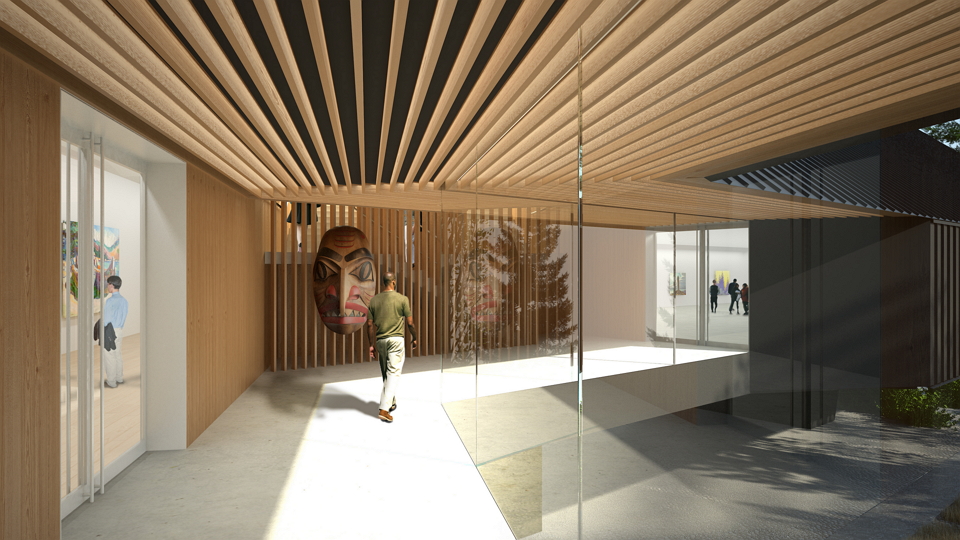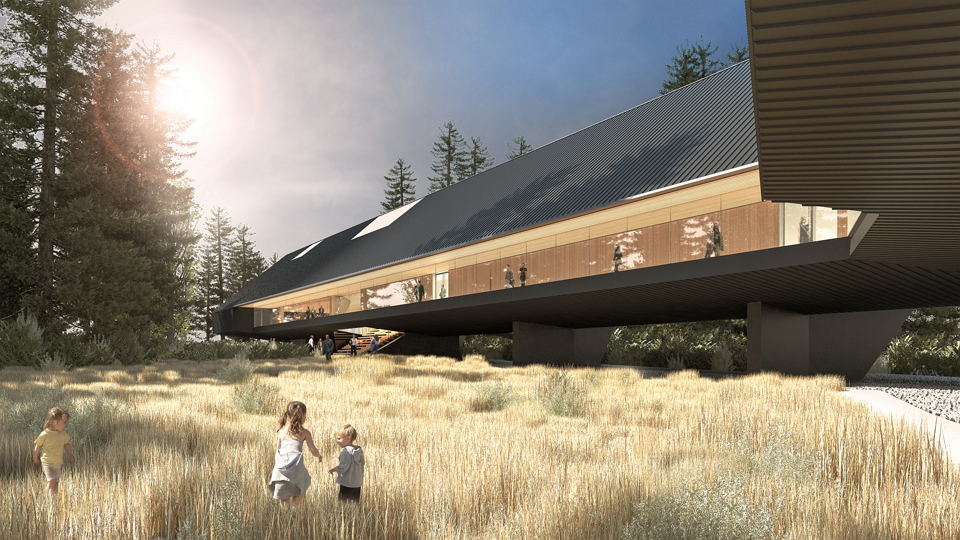The Sea to Sky Highway is more than just a medium of transportation. Its signage and educational kiosks acknowledge the Lil’wat and Squamish nations and their land, creating a cultural journey through unceded territory. That journey now includes another, quite different, cultural stop. Situated in the background of Whistler Village, the Audain Art Museum houses an impressive collection of First Nations and British Columbian art. Drawn from the private collection of builder and philanthropist Michael Audain, the museum provides a hefty boost to the cultural landscape of Whistler.
First breaking ground in 2012, the museum has been highly and longly anticipated. After a couple of roadblocks, including an expansion of the space from 25,000 square-feet to a rather whopping 56,000 halfway through construction, the museum opened to the public on March 12.
Speaking from the museum during a press preview, Audain relays his strong, personal connection to the space and the artwork. “My wife Yoshi and I built this museum as a home for our art,” he explains. “Being a home-builder: that is the way I look at it. I have spent 40 years collecting the art of this province, not originally with the idea of building an art museum, but simply because Yoshi and I have cherished the privilege of living with the rich artist heritage of British Columbia, the land we have come to love.”
The museum certainly expands beyond a pet project. Designed by Patkau Architects, the building itself will easily be considered a Whistler destination. The interior is flanked with warm, luminous hemlock, designed to glow out of the matte black exterior, mimicking a lantern in the woods. “The colour we chose is the same colour as a fir forest,” architect John Patkau says, noting that with that quality, the building is able to recede into the timber. Huddled within the thick coppice and set against the mountain, the building’s large footprint is hidden within, just its peaked roof barely visible above the tree line.
The exhibition space begins with a gallery of First Nations art, much of which was made before European contact. Masks hailing from all over British Columbia are held in glowing glass display cases. The dimly lit room is marked at the back wall with a large piece, The Dance Screen, by master carver James Hart.
From there, the galleries move in more-or-less chronological order, transitioning to a room of more than 20 Emily Carr pieces before moving to a large array by E.J. Hughes. The collection then opens itself up to modern British Columbian art and contemporary works from Jeff Wall, Ian Wallace, Gathie Falk, and Arabella Campbell. The permanent collection ends with work from Brian Jungen, whose towering totem poles made of golf bags hover over cheeky paintings by Shawn Hunt. It’s not a comprehensive collection, but considering it comes from a private one, completion isn’t to be expected. The museum is posed to be a collecting institution, focused solely on acquiring work from British Columbian artists, which can be expected to fill in some of the gaps noticeable in the current offering.
The temporary exhibition, “Los Trés Grandes—Diego Rivera, José Clemente Orozco, and David Alfaro Siqueiros,” taken again from the Audains’ personal collection, connects with the couple’s interest in the socially conscious work seen throughout the museum. “Those painters associated with the Mexican Revolution believed that artists had a duty to not only document social change, but actually be a part of a movement for social justice and the widening opportunity for Indigenous people,” Audain says. The gathering is the only one of its kind in Canada and, clocking in at 24 pieces, it’s a sizable one as well. Interrupted only by an awkward “reading room” decorated with confusing reproductions of Mexican artwork, it’s an exciting opportunity to see pieces normally difficult to view in the Pacific Northwest. The show is also an indicator of future temporary exhibitions, which are to be sourced from outside of the Audain collection, focusing on both international and Canadian work.
From the large, floor-to-ceiling windows that flank the hallways of the museum, to the bordering meadow which will be completed once the spring season unfolds, the site may still have a couple plots to be finished, but what can be seen already is a promising beacon, glowing brightly from inside the forest.
__________
Get more great stories delivered right to your inbox.










